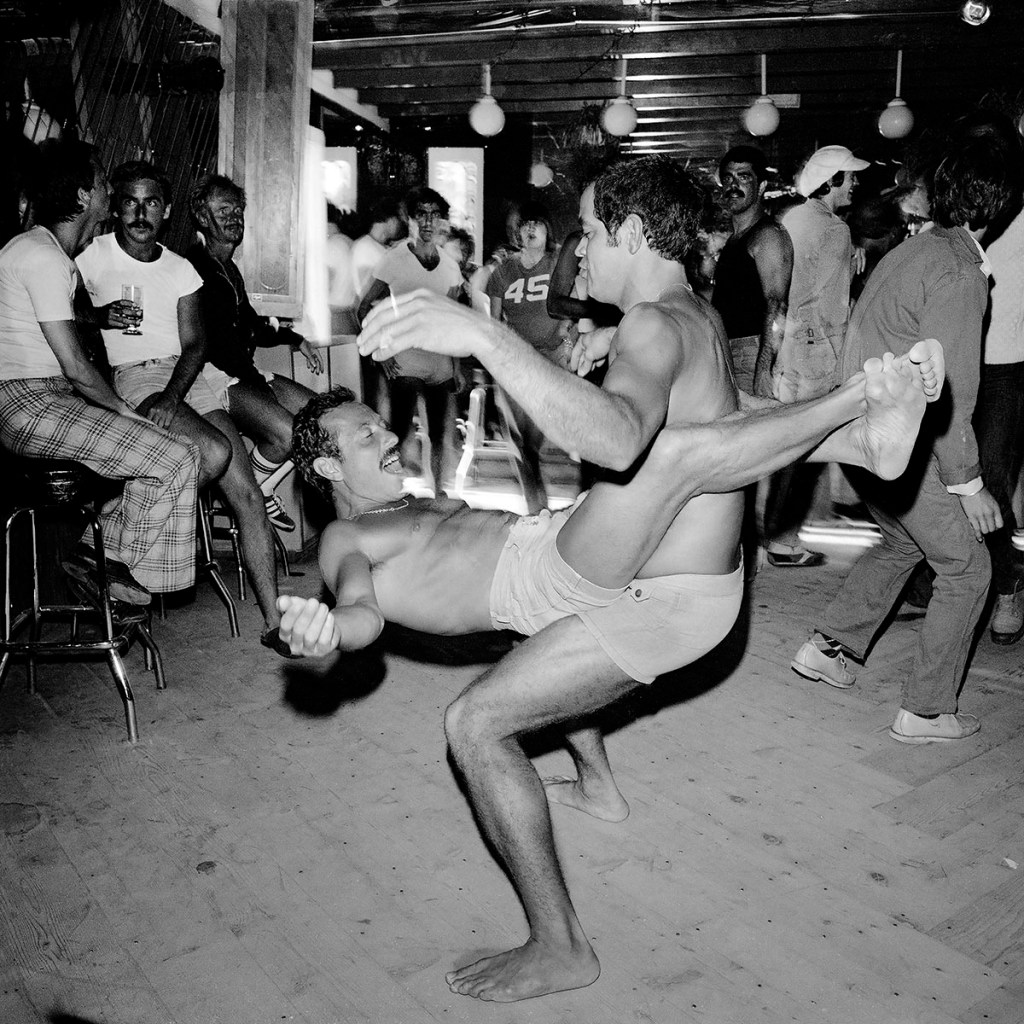When Meryl Meisler gets in touch, we tend to listen. The photographer‘s shots of New York in the 1970s and 80s always catch the eye, transporting us to a time we may not have been alive for, but that through her work we are able to feel all the same.
Meisler’s work has been on-show at two Paris galleries recently: at the Polka Galerie, Studio 54 & More depicts with trademark effervescence the faces and reverie of the disco era, while she also contributed to DISCO: I’m Coming Out, which runs till August at the Philharmonie de Paris. The multi-format exhibition looks to encompass the political and festive dimension to the disco scene, and how it brought all different types to dance beneath the glitter ball.
Videos by VICE
Mostly, though, it’s just great seeing new photos of people having unhinged nights out in New York in the 1970s. Some feature in Meisler’s latest book Street Walker; VICE spoke to her about those long disco nights, the moments she captured, and the eternal echo of nightlife.
VICE: Hey Meryl. So, the U.S. in the mid 70s—there had been a drugs boom, the Vietnam War was coming to an end, and Watergate had happened as well. It feels like there must have been a lot of cynicism floating about. Where did disco fit into all that?
Meryl Meisler: It’s a fact that there were all these cultural changes happening very quickly, and Stonewall [a series of spontaneous protests against the NYPD targeting gay venues in Manhattan] was only a few year prior. The fact that there was a sexual revolution and that people felt comfortable going out and being themselves was really important. Also the feminist movement, there was a new unbridled freedom to be more of yourself. It’s also an evolution in music, this discovery of the power of the DJ. DJs were creating music as it was happening. There was a sense that very moment was unique. They were feeling the audience and moving the audience, with amazing sound systems and interior decor that was incredible, always changing and completely transforming a club for every themed night.

The thing with being my age is everything can feel like a rerun of something that’s come before. With disco, did you have a sense that you were experiencing something new?
I liked the photographs of Brassaï, who photographed Parisian nightlife in the 30s. And I was aware of it, I said, “This is my nightlife of the 30s, now. This is my nightlife.” That’s what inspired me to document what I was seeing. I sensed something. I didn’t know I was in the epicenter of it, because it was also going on in France, and London, you heard about clubs. I didn’t realize that New York City was ground zero and that I was at the start of it. I mean, there’s always been nightlife—in prehistoric times, they were dancing. Music, dance, and celebration are part of the human condition, something that humans need to do.
Does the cost of living in New York now prohibit the kinds of hedonistic lifestyle that are captured in your photos?
It’s definitely an expensive city, and you have to really persevere to find affordable housing. It is there but it is challenging—as it is trying to find your community, people that you like being with. But like, even last night [iconic New York nightlife promoter] Susanne Bartsch runs these parties, it’s free to go in. Everybody drinks. I didn’t even drink. So it was really inexpensive. And people, I think, from now until eternity, it’s always going to be… Berlin, the Weimar period, you know, it’s here now. It’s going on there. It’s something that human beings do.
“I do think clubs are darker than what I remember.”
So you’re back photographing nightlife again?
I started photographing nightlife here, slowly, once in a while. And I realized, ‘Oh, I like it.’ I like the images. I like the experience. And it made sense. And you know, as an artist, or writer, whatever it is, you think, ‘Oh, I’ve been there. I’ve done that. It’s already done.’ It’s like, OK, maybe just because it’s fun is a good enough reason to do it. And it’s very challenging—photographing in the dark is very challenging. I do think clubs are darker than what I remember, but then again, my eyes have changed, so I feel like it’s harder to focus.
I’m going back out purposefully with a film camera and flash, and re-seeing what has changed, what’s new, what’s going on. It’s fascinating seeing what’s stayed the same. It’s like an homage to earlier times. And even in the 70s, when I was going out, I felt like it was an homage to Paris in the 30s. There’s a nightlife culture and history, and I sense the people who participate, the makers and the doers, are very aware of it, and are honoring it.
Check out Meryl Meisler’s website and follow her on Instagram @merylmeisler
Follow Nick Thompson on Instagram @niche_t_










More
From VICE
-

Courtesy of the author -

BRIDGEVIEW, ILLINOIS – JUNE 20: Trippie Redd performs during the 2025 Lyrical Lemonade Summer Smash at SeatGeek Stadium on June 20, 2025 in Bridgeview, Illinois. (Photo by Barry Brecheisen/Getty Images) -

Screenshot: Seed Lab

